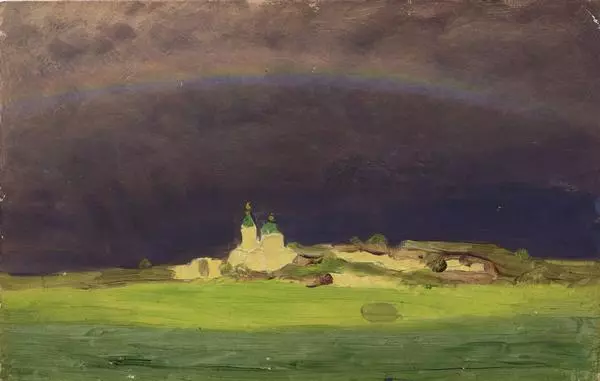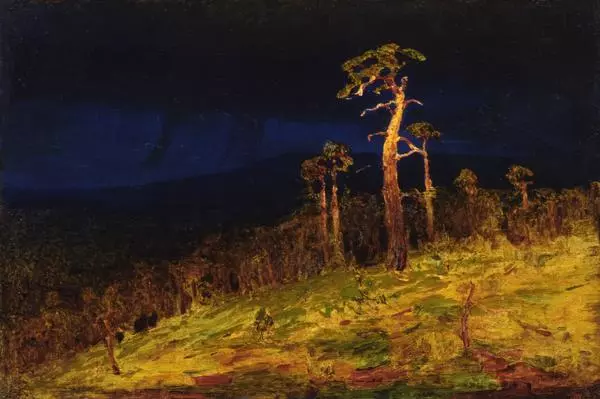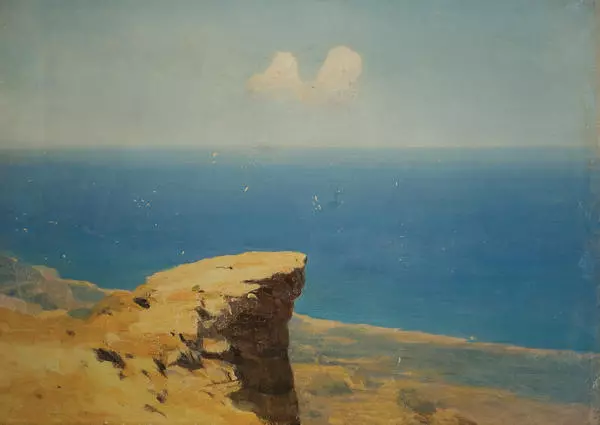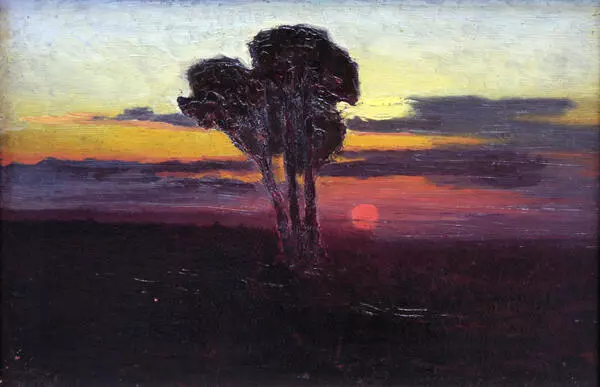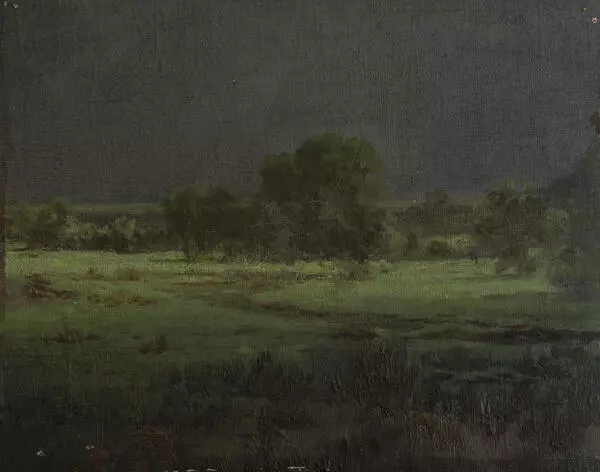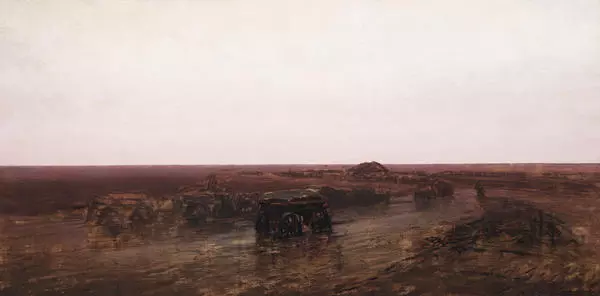Arkhip Kuindzhi drew this sketch for the painting ‘Sunset in the steppe, ” in the year 1900. Before painting a large canvas, the artist completed a lot of preparatory work. In his sketches he tried to convey the changes in lighting at sunset, and boldly experimented with different painting solutions. This is a variant — from one of the sketches.
With only a few strokes the artist conveyed flashes of light, which pierced through the massive clouds. He was able to portray the sunset with such realism. The artist moved the line of the horizon down in order to accentuate the sky. Thus, he accurately painted a mill in the distance, which was illuminated in crimson.The artist lived in the same era as the famous Itinerants Ivan Shishkin, Vasiliy Polenov and other recognized landscape artists. At the start of his journey Arkhip Kuindzhi took part in exhibitions of the Itinerants. This period had a major impact on the artist’s development — it laid the foundation for his understanding of reality. However, Arkhip Kuindzhi’s more advanced works of art vary from works of other landscape artists.
The thing is that the artist learned to convey lighting effects in nature like no one else: the cold glimmer of the moon, the light mist of dawn, and the sunset lit sky. His large-scale painting ‘Sunset in the Steppe, ’ contains such subtle color transitions that it seems as if the sunlight is still moving and is about to fade away completely.
Arkhip Kuindzhi lived from 1842 to 1910. He was born in the city of Mariupol to a family of a poor Greek shoemaker. On his birth certificate his name was written under the family name Emendji — ‘a working man.’ He became an orphan at a young age, and was raised by his father’s relatives. He was a bad student in school, even though he had already taken a liking to painting and drawing, and painted on whatever material — on walls, fences and sheets of paper. As an adult, he finally enrolled in the Academy of Arts as a volunteer on his third attempt — They did not want to accept him due to his lack of preparation. However, all his hard work and struggles paid off due to his exponential rise towards the end of the 1870s.
The artist created special types of landscapes, which were based on realistic perceptions of the world, but transformed by creative imagination. Even in his lifetime he was considered a genius.





